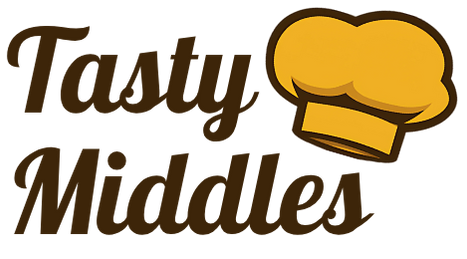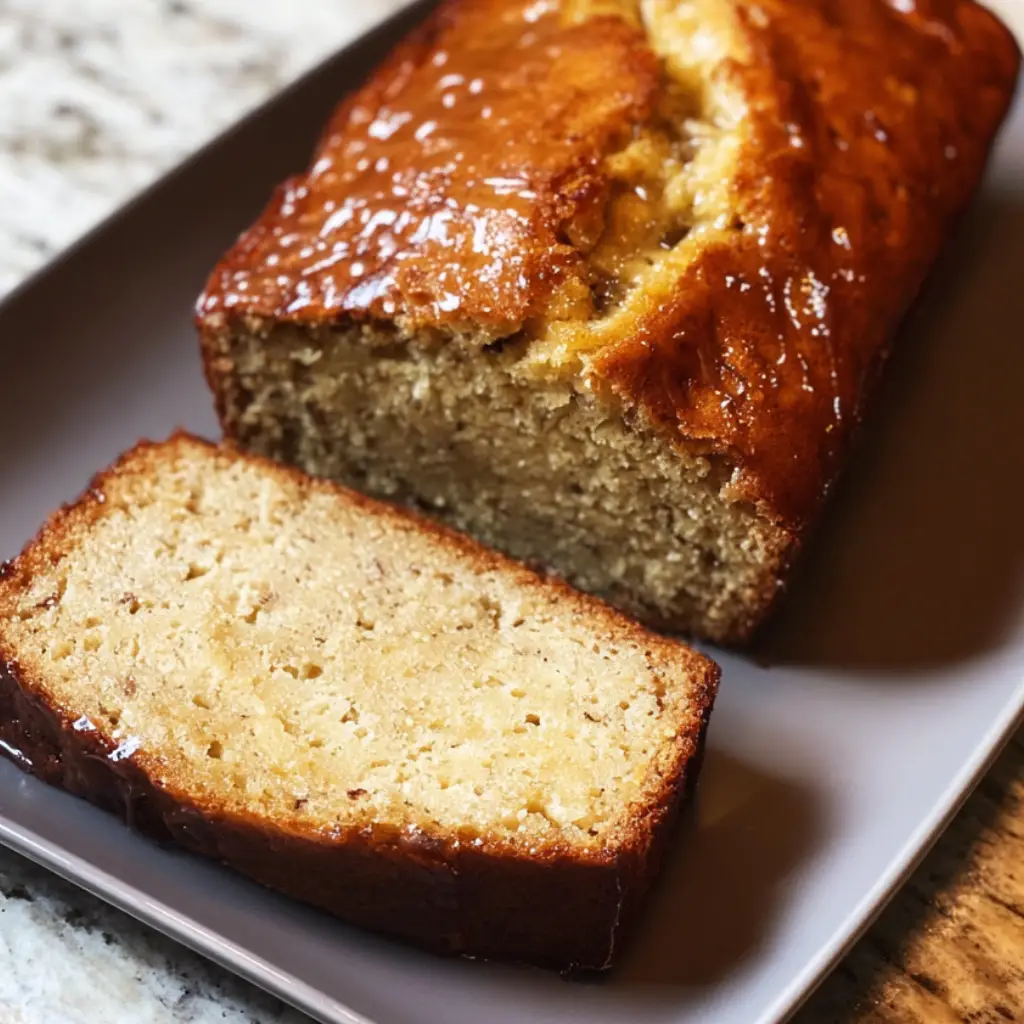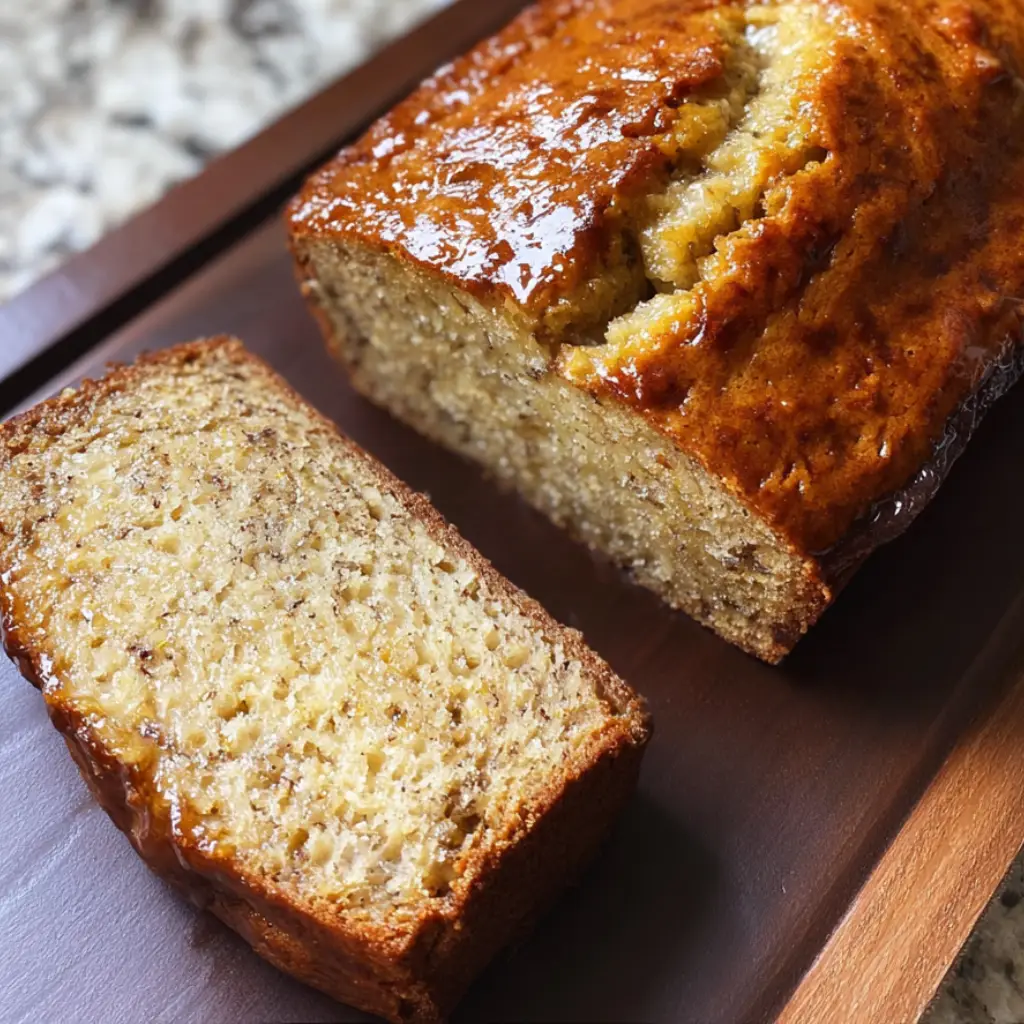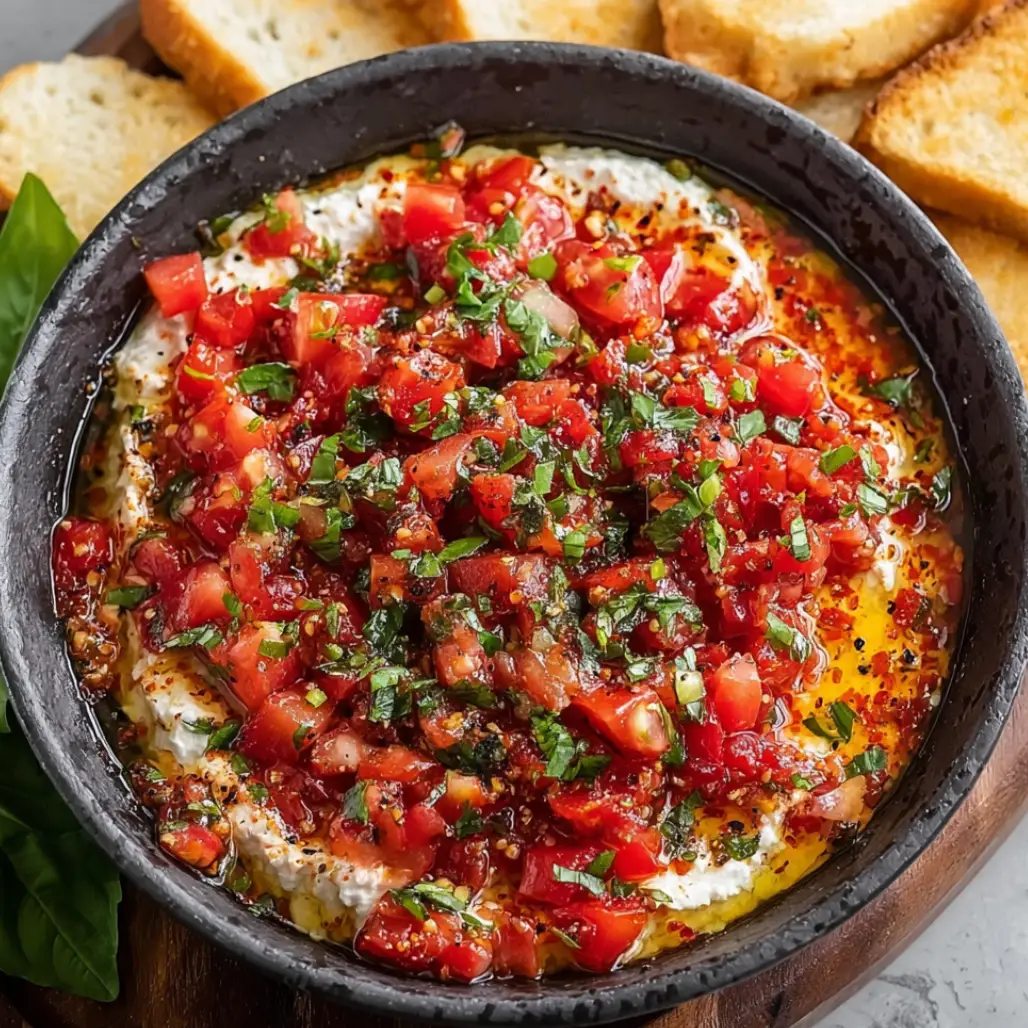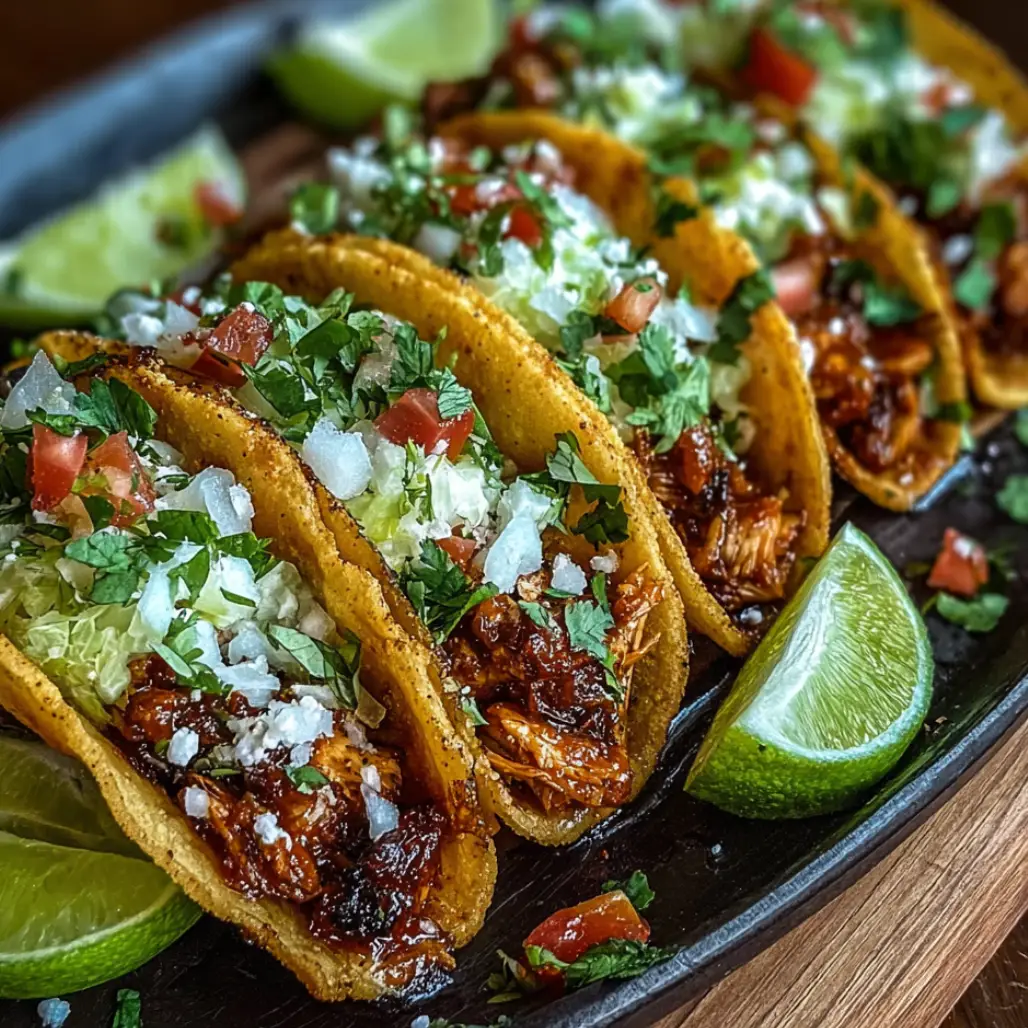| Prep Time: 15 minutes | Cook Time: 60 minutes | Total Time: 75 minutes | Serves: 10 |
|---|
When overripe bananas beckon from the counter and the craving for homemade comfort food strikes, honey vanilla banana bread delivers the perfect fusion of natural sweetness and warm vanilla fragrance because it transforms simple pantry ingredients into a moist, tender loaf that fills the kitchen with irresistible aromas while providing a healthier alternative to traditional sugar-laden quick breads. This exceptional recipe showcases the magical combination of golden honey and pure vanilla extract working in harmony with perfectly ripened bananas because these natural sweeteners create complex flavor layers that develop beautifully during baking while maintaining the beloved texture and comforting qualities that make banana bread such a cherished treat across generations and seasons.
Why This Honey Vanilla Banana Bread Recipe Works
The brilliance of this honey vanilla banana bread lies in its thoughtful use of honey as the primary sweetener because honey’s unique properties contribute moisture, tenderness, and depth of flavor that granulated sugar simply cannot match while creating a naturally golden crust that develops rich caramelized notes during the baking process. The addition of pure vanilla extract elevates the entire flavor profile because vanilla’s complex aromatics complement both the honey’s floral sweetness and the bananas’ natural fruit sugars, creating a sophisticated taste experience that appeals to both children and adults.
This recipe succeeds where many banana breads fall short because it achieves the perfect balance between sweetness and moisture without relying on excessive amounts of butter or oil, instead letting the natural properties of honey work alongside properly ripened bananas to create the dense yet tender crumb that characterizes exceptional quick breads. The careful ratio of wet to dry ingredients ensures consistent results because honey’s liquid content is accounted for in the overall moisture balance, preventing the common problems of either overly dense or insufficiently sweet banana bread.
Essential Ingredients for Perfect Results
3 large overripe bananas (about 1 1/2 cups mashed, for optimal sweetness and moisture)
1/2 cup melted unsalted butter (cooled slightly to prevent curdling)
3/4 cup pure honey (preferably local or wildflower variety for complex flavor)
2 large eggs (room temperature for better incorporation)
1 teaspoon pure vanilla extract (Madagascar vanilla for superior flavor depth)
1 3/4 cups all-purpose flour (spooned and leveled for accurate measurement)
1 teaspoon baking soda (fresh for optimal leavening power)
1/2 teaspoon fine sea salt (enhances all flavors and balances sweetness)
1/2 teaspoon ground cinnamon (adds warmth and complements vanilla)
1/4 teaspoon ground nutmeg (subtle spice that enhances banana flavor)
1/3 cup buttermilk (adds tanginess and tender texture)
2 tablespoons turbinado sugar (optional, for crunchy top coating)
The Art of Creating Exceptional Honey Vanilla Banana Bread
Creating exceptional honey vanilla banana bread requires understanding the unique properties of honey as a liquid sweetener because it behaves differently from granulated sugar in both mixing and baking, requiring adjustments to technique and timing that ensure optimal texture development and flavor integration. The key lies in recognizing that honey’s enzymes and natural acidity interact with other ingredients to create tender crumb structure while contributing to the beautiful golden color that distinguishes quality banana bread.
Success depends on mastering the balance between wet and dry ingredients because honey adds significant moisture that must be accounted for in the overall liquid ratio, while the natural sugars in both honey and bananas affect browning rates and final texture in ways that require careful temperature and timing management throughout the baking process.
Step-by-Step Instructions for Perfect Results
Begin by preheating your oven to 350°F and preparing a 9×5-inch loaf pan by greasing thoroughly with butter and lining with parchment paper, leaving overhang for easy removal because proper pan preparation prevents sticking while ensuring even heat distribution throughout the baking process.
Professional Tip: Allow ingredients to come to room temperature for at least 30 minutes before mixing because this promotes better emulsification and prevents the butter from solidifying when combined with cold ingredients.
Key Points: Proper temperature preparation ensures smooth mixing and optimal texture development while preventing common issues like lumpy batter or uneven rising during baking.
In a large mixing bowl, mash the overripe bananas thoroughly using a fork or potato masher until mostly smooth with just a few small lumps remaining because these small pieces will create pleasant texture variation while the majority of smooth banana provides the moisture and sweetness foundation for the bread.
Professional Tip: Choose bananas that are heavily speckled or even slightly black because these provide maximum sweetness and moisture while contributing the most intense banana flavor to the finished bread.
Key Points: Proper banana ripeness and mashing technique create the ideal balance between smooth texture and interesting textural elements that distinguish homemade bread from commercial alternatives.
Add the melted butter, honey, eggs, vanilla extract, and buttermilk to the mashed bananas, whisking vigorously until completely combined and smooth because thorough mixing at this stage ensures even distribution of liquid ingredients while preventing separation that could affect final texture.
Professional Tip: Drizzle the honey slowly while whisking constantly because this technique prevents the honey from settling to the bottom and ensures even sweetener distribution throughout the batter.
Key Points: Complete liquid ingredient integration creates a stable base that accepts dry ingredients evenly while preventing streaks or pockets of unmixed ingredients in the finished bread.
In a separate bowl, whisk together flour, baking soda, salt, cinnamon, and nutmeg until evenly distributed because proper dry ingredient mixing prevents pockets of leavening agents or spices that could create uneven rising or flavor distribution in the baked bread.
Professional Tip: Sift flour if it appears lumpy or has been stored for extended periods because this ensures smooth texture and accurate measurement while preventing dense spots in the finished bread.
Key Points: Uniform dry ingredient distribution creates consistent leavening action and flavor development throughout the entire loaf while preventing common texture problems.
Add the dry ingredients to the wet ingredients in two additions, folding gently with a rubber spatula just until flour disappears because minimal mixing prevents gluten development that could create tough, dense texture rather than the tender crumb desired in quality quick bread.
Professional Tip: Stop mixing as soon as no dry flour is visible because overmixing activates gluten proteins and creates tough, chewy texture that detracts from the desired tender, cake-like crumb.
Key Points: Gentle folding technique preserves the light, tender texture while ensuring complete ingredient incorporation without compromising the bread’s characteristic softness and moisture.
Pour the batter into the prepared loaf pan, spreading evenly and smoothing the top surface because level distribution ensures even baking while proper surface preparation creates attractive appearance and consistent crust development.
Professional Tip: Gently tap the filled pan on the counter a few times to release air bubbles because trapped air can create tunnels or uneven texture in the finished bread.
Key Points: Even batter distribution and air bubble removal create uniform texture and attractive appearance while preventing common structural issues that affect both presentation and eating quality.
If desired, sprinkle the turbinado sugar evenly over the batter surface because this creates a delightfully crunchy topping that adds textural interest while enhancing the bread’s visual appeal through caramelization during baking.
Professional Tip: Press the sugar lightly into the batter surface because this helps it adhere during baking and prevents excessive browning that could create bitter flavors.
Key Points: Optional sugar topping creates professional bakery appearance while adding textural contrast that elevates the overall eating experience through complementary sweetness and crunch.
Bake for 50-60 minutes, checking for doneness by inserting a toothpick into the center because proper doneness testing prevents underbaking that creates gummy texture or overbaking that results in dry, crumbly bread with diminished flavor.
Professional Tip: Begin checking at 50 minutes because honey-sweetened breads often bake faster than sugar-based versions due to honey’s contribution to browning and moisture retention.
Key Points: Accurate doneness testing ensures optimal texture and flavor while preventing the common problems of underdone centers or overdone exteriors that compromise eating quality.
Cool in the pan for 15 minutes before transferring to a wire rack because this brief cooling period allows the structure to set while preventing breaking during removal, while complete cooling ensures clean slicing and optimal texture development.
Professional Tip: Use the parchment paper overhang to lift the bread from the pan because this technique prevents damage to the delicate sides while ensuring easy, clean removal.
Key Points: Proper cooling technique preserves the bread’s structure and appearance while allowing flavors to develop fully and textures to reach their optimal state for serving and storage.
Professional Tips for Culinary Excellence
Honey selection significantly impacts the final flavor because different honey varieties contribute unique taste notes, with wildflower honey providing complex floral undertones while clover honey offers mild sweetness that allows vanilla and banana flavors to shine prominently throughout the finished bread.
Measuring honey accurately requires proper technique because honey’s viscosity can lead to measurement errors that affect both sweetness levels and moisture content, making it important to use liquid measuring cups and level ingredients carefully for consistent results across multiple baking sessions.
Storage considerations become crucial with honey-sweetened breads because honey’s hygroscopic properties help retain moisture longer than sugar-based alternatives, extending freshness while requiring proper wrapping to prevent excessive moisture absorption from the environment that could affect texture quality.
Creative Variations to Explore
Transform your honey vanilla banana bread into gourmet experiences by incorporating complementary flavors such as orange zest and cardamom for Mediterranean-inspired variations, or brown butter and toasted walnuts for deeper, nuttier profiles because these additions create sophisticated flavor combinations while maintaining the essential honey-vanilla foundation.
For chocolate enthusiasts, create indulgent variations by folding in dark chocolate chips or swirling in Nutella because these rich additions complement the honey’s floral sweetness while the vanilla enhances chocolate’s complex flavor notes, creating dessert-worthy treats that satisfy intense cravings.
Develop seasonal specialties by incorporating autumn spices like maple extract and chopped pecans, or summer variations featuring fresh berries and lemon zest because seasonal adaptations demonstrate creativity while taking advantage of peak ingredient availability and seasonal flavor preferences.
Perfect Pairing Ideas for Complete Experiences
Serve your honey vanilla banana bread alongside breakfast favorites that complement the sweet, comforting flavors while providing protein and nutritional balance that creates satisfying morning meals suitable for both weekday routines and leisurely weekend brunches.
Create elegant afternoon tea presentations by pairing sliced bread with refreshing beverages that cleanse the palate between bites while enhancing the honey and vanilla flavors without overwhelming the delicate bread texture.
For entertaining purposes, incorporate honey vanilla banana bread into dessert spreads alongside dessert recipes that provide textural variety and complementary flavors, allowing guests to create customized dessert experiences that showcase homemade quality.
Discover More Culinary Adventures
Expand your baking repertoire with complementary snacks and appetizers that demonstrate versatility in home baking while building confidence with quick bread techniques that translate to numerous other recipe applications and flavor combinations.
Build comprehensive meal planning skills by incorporating honey vanilla banana bread into balanced eating patterns that include perfect sides and complete nutrition profiles that support active lifestyles while satisfying comfort food cravings through wholesome ingredients.
Explore creative presentation techniques with savory sides that demonstrate how sweet and savory elements can work together in comprehensive menu planning that showcases culinary creativity and sophisticated flavor understanding.
Storage Guidelines for Optimal Quality
Store honey vanilla banana bread at room temperature wrapped tightly in plastic wrap for up to three days because honey’s natural preservative properties help maintain moisture while proper wrapping prevents air exposure that could cause staleness or texture deterioration during storage periods.
For longer storage, wrap individual slices in plastic wrap and freeze for up to three months because this method prevents freezer burn while allowing for convenient single-serving portions that thaw quickly for spontaneous enjoyment or packed lunches throughout busy weeks.
Refrigerated storage extends freshness up to one week when properly wrapped because the cool temperature slows moisture loss while honey’s hygroscopic properties continue protecting texture, though slight warming before serving enhances flavor and texture appreciation.
The Science Behind Perfect Quick Bread
Honey’s unique composition affects bread texture because its blend of fructose and glucose creates different browning patterns than sucrose while contributing enzymes that tenderize gluten proteins, resulting in the characteristic moist, tender crumb that distinguishes honey-sweetened breads from traditional alternatives.
Vanilla extract’s alcohol content evaporates during baking while leaving behind complex flavor compounds that enhance perception of sweetness and create aromatic depth because vanillin and other volatile compounds interact with heat to develop the warm, comforting fragrance associated with quality baked goods.
Banana ripeness affects both flavor and texture because enzymatic breakdown of starches into sugars increases sweetness while pectin degradation creates the soft texture that contributes moisture and binding properties essential for successful quick bread structure and eating quality.
Troubleshooting Common Issues
If honey vanilla banana bread turns out too dense, overmixing likely caused excessive gluten development because vigorous stirring activates proteins that create tough texture rather than the desired tender crumb, requiring gentler folding techniques in future attempts for optimal results.
Uneven browning typically indicates oven hot spots or improper pan positioning because honey’s contribution to browning requires careful temperature management and occasional rotation to achieve uniform color development without overbaking edges or undercooking centers.
Overly sweet results suggest banana ripeness exceeded optimal levels because extremely overripe bananas combined with honey can create cloying sweetness that overwhelms other flavors, requiring balance adjustments through slightly less ripe fruit or reduced honey quantities.
Additional Inspirations for Creative Baking
Create themed baking sessions featuring honey vanilla banana bread alongside flavored dips and marinades that demonstrate ingredient versatility while providing interactive experiences that engage family members in kitchen creativity and skill development.
Build confidence in quick bread techniques by exploring variations that utilize similar mixing methods while developing understanding of how different ingredients interact to create varied textures and flavors that expand baking repertoires and creative possibilities.
Develop seasonal baking traditions that incorporate honey vanilla banana bread into holiday celebrations and special occasions, demonstrating how fundamental recipes adapt to create meaningful food memories that connect families and friends through shared culinary experiences.
Conclusion
This honey vanilla banana bread represents the perfect marriage of natural sweetness and comforting familiarity because it delivers all the beloved qualities of traditional banana bread while offering superior flavor complexity and nutritional benefits through thoughtful ingredient selection and proper technique. The combination of golden honey and pure vanilla creates an aromatic experience that transforms simple baking into an act of love that fills homes with warmth and anticipation.
The versatility of this foundational recipe opens endless possibilities for creative adaptation and seasonal variation because the basic technique accommodates numerous flavor additions and dietary modifications without compromising the essential character that makes honey vanilla banana bread so universally appealing. Whether enjoyed as morning sustenance, afternoon comfort, or evening indulgence, this exceptional bread provides the foundation for countless memorable moments that celebrate the simple pleasure of homemade goodness shared with those we cherish most.
